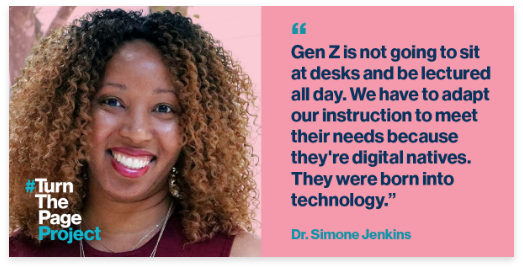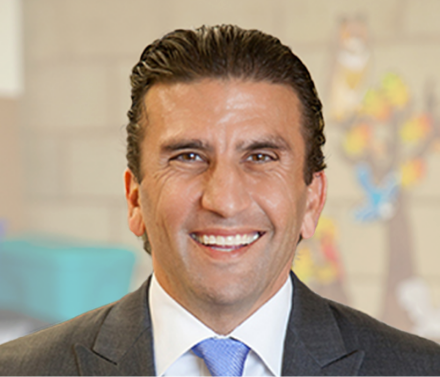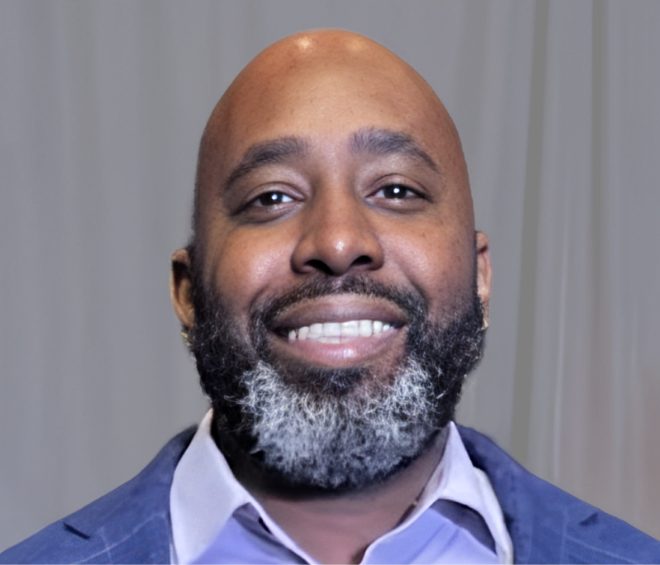EARLY IN MY career, I became a college and career counselor at a high school. Ninety percent of the students were African American, ages 16 to 21. Many of them were still reading between a first- and a third-grade level, so it was quite a challenge to put them on a pathway to obtaining gainful employment.
Now we’re starting to see students of various backgrounds—regardless of their ethnicity or what they may be going through in their personal lives—have access to rigorous learning.”
Take a look at the workforce shortages that are growing in the health sciences, nursing, medicine, and so forth. The Bureau of Labor and Statistics projects that over half a million computer science jobs will come up by 2024, and we won’t have people with the skills to fill those positions.
We need to find innovative ways to educate our students, especially Gen Z. They’re not going to sit at desks and be lectured all day. They need something kinesthetic. They need to be able to use a QR code and work in groups. They acquire knowledge differently than my generation or the generations before me. We have to adapt our instruction to meet their needs because they’re digital natives. They were born into technology. They don’t know a world without social media. We have to make adjustments because this is who we’re preparing for the next generation of work.

SHARE SIMONE’S STORY!
And that is why I created Soutlier. It’s an e-learning platform that gives students the opportunity to be hands-on with their learning. They’re not just watching videos or taking notes—they’re going to engage in a challenge. Let’s say I have a student studying robotics. I’ll outline the steps to build a robot, and they might upload a video or pictures to give evidence that they understand what they’re doing. Scoutlier quantifies that evidence and allows the teacher to grade the assignment and provide feedback. As a result, the student knows how to put together a robot because it’s hands-on as opposed to them just watching.
I love that we can reach students across the U.S. because it’s available to any student who has an internet connection. I know that there are challenges with students getting access to computers, but now we’re starting to see students of various backgrounds—regardless of their ethnicity or what they may be going through in their personal lives—have access to rigorous learning.
And now we can globalize it. We have the opportunity to not only connect our students across the country, but we can connect them with somebody in China so they can learn from each other. We’re arming our students with the tools and skills they need to be rock stars in STEM, technology, and health sciences. We’re preparing this generation to literally change the world.







